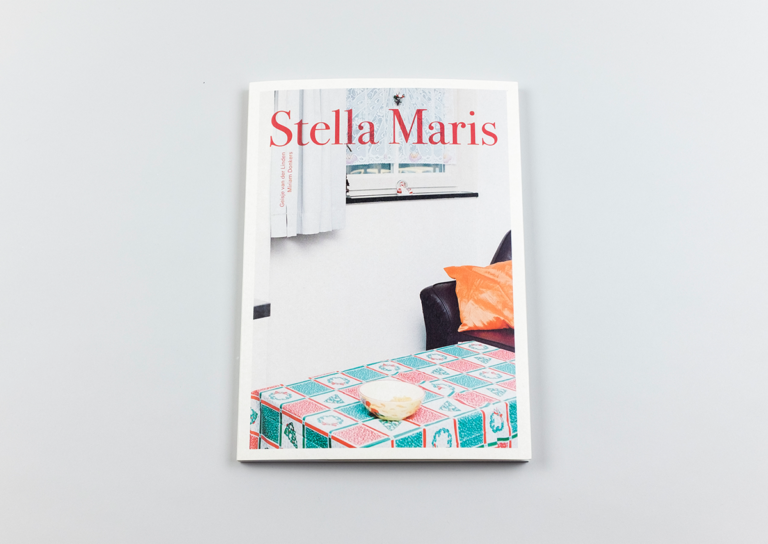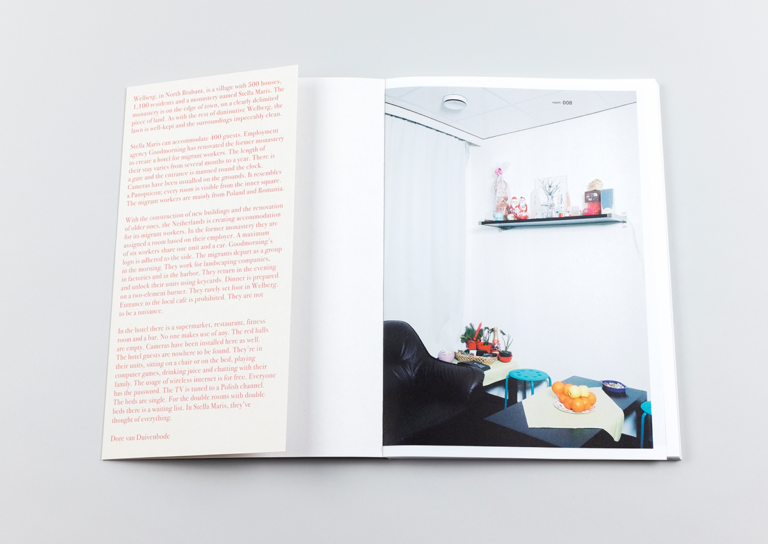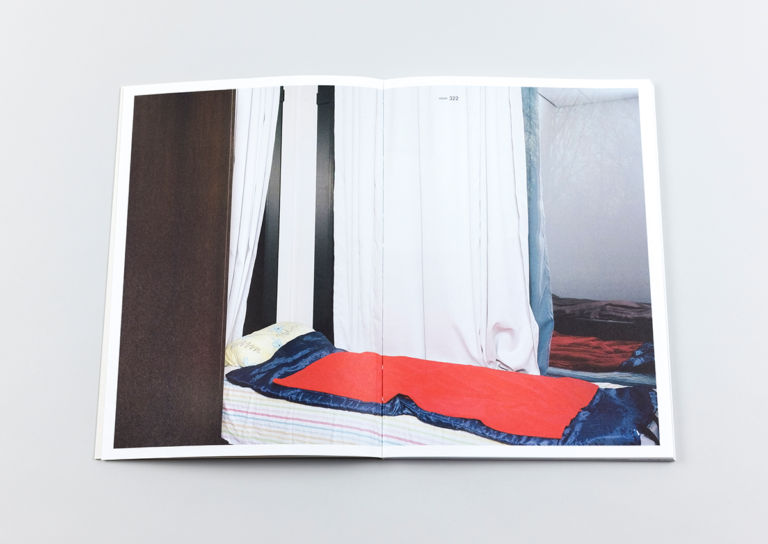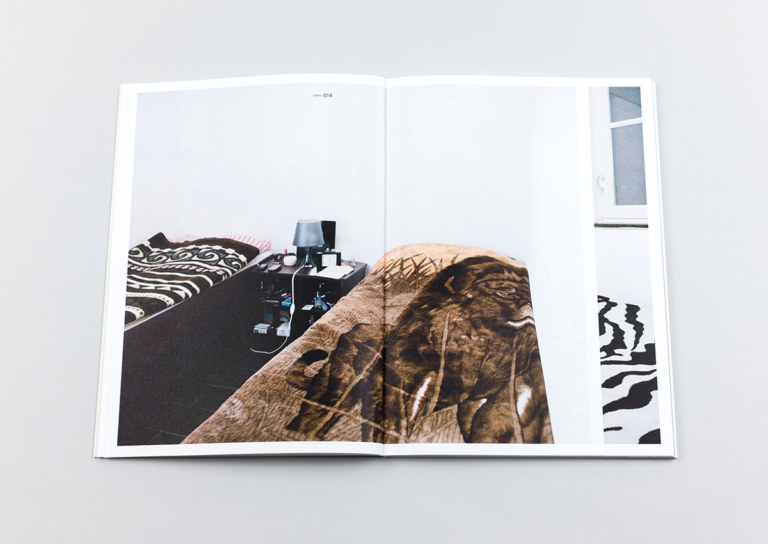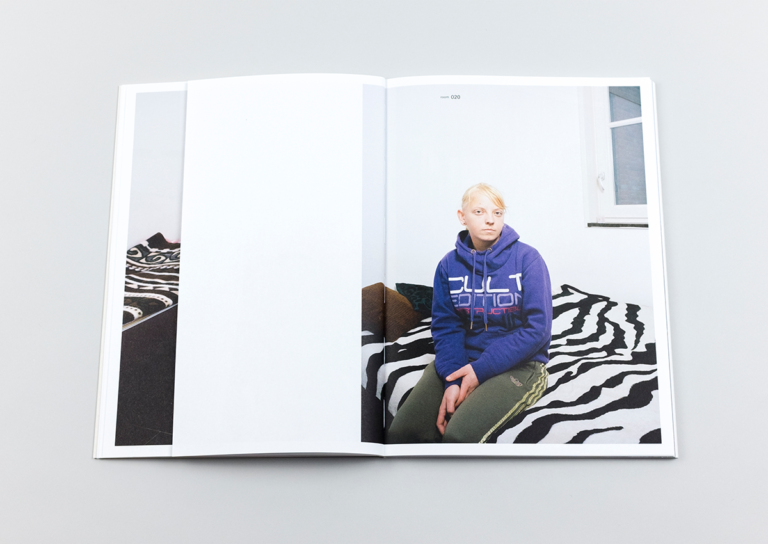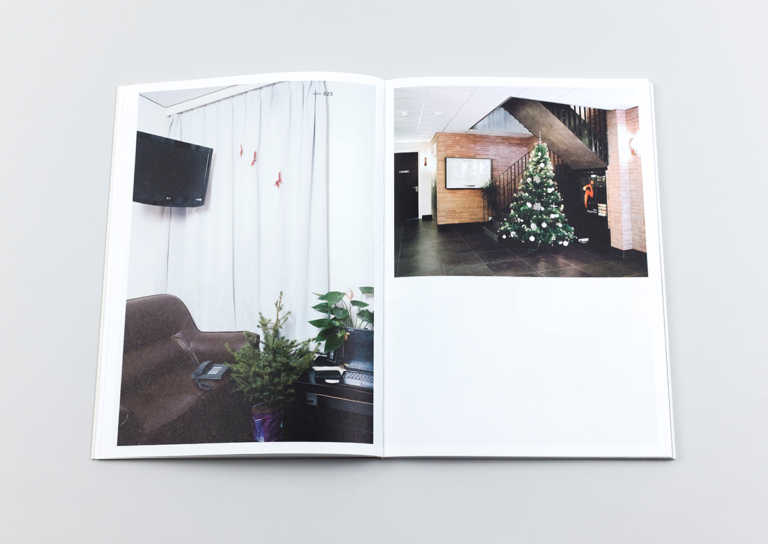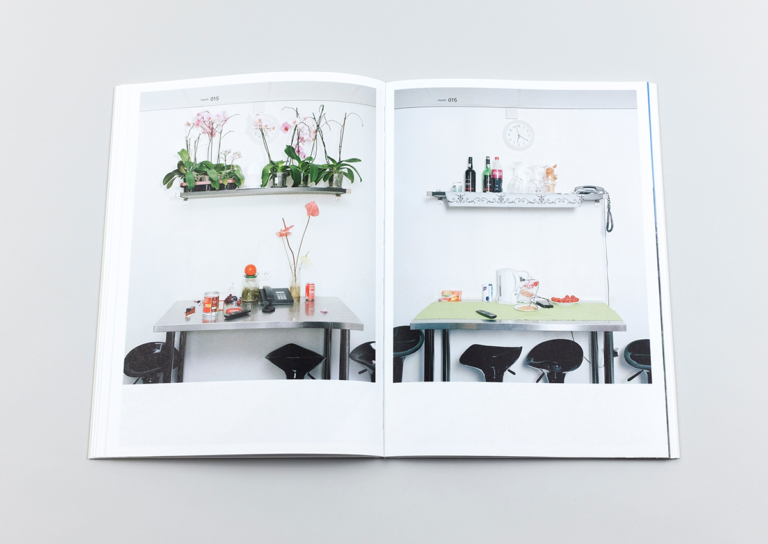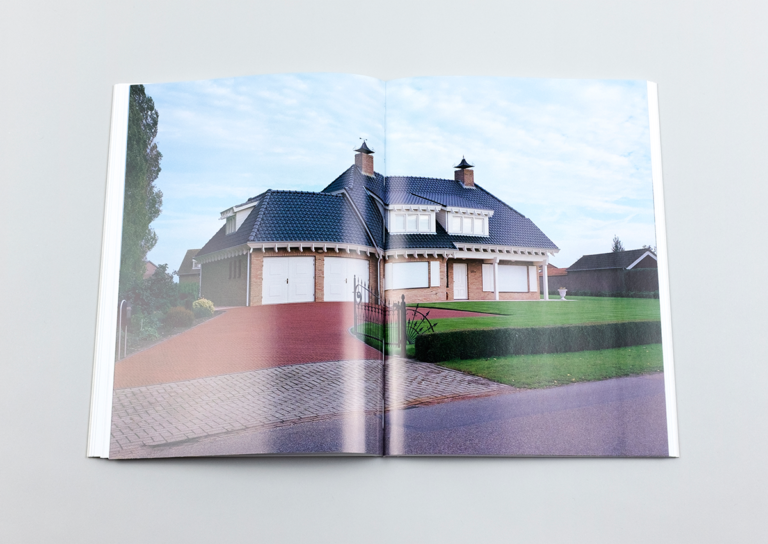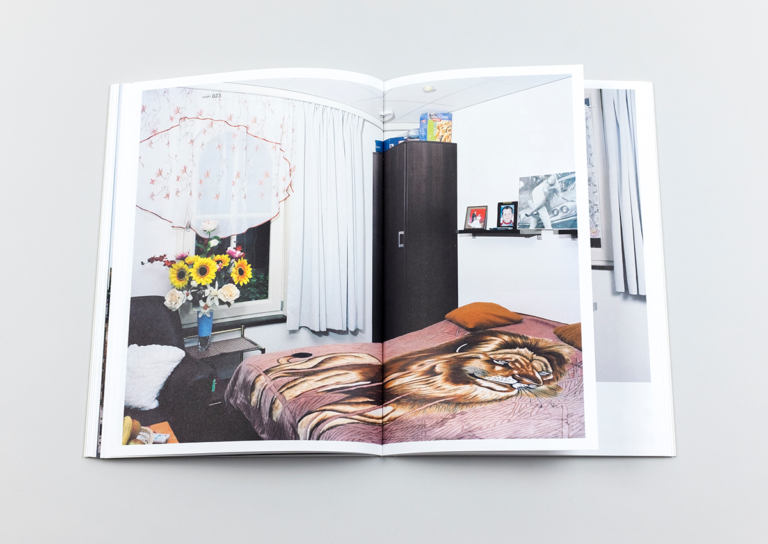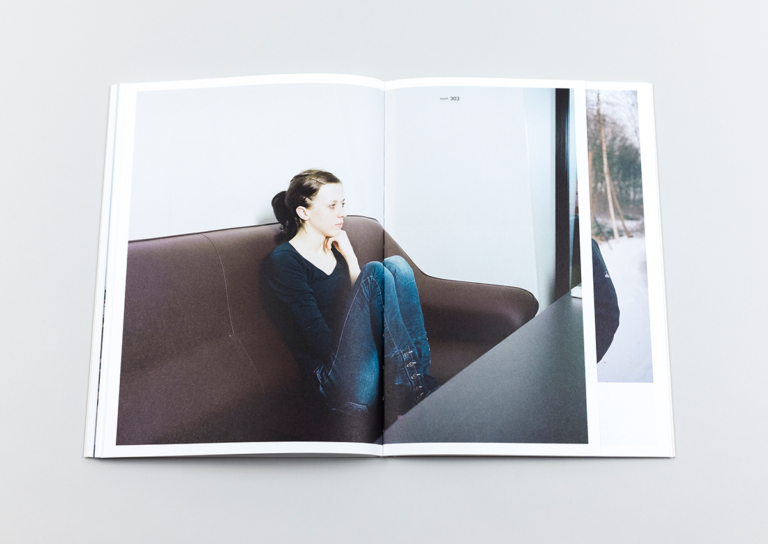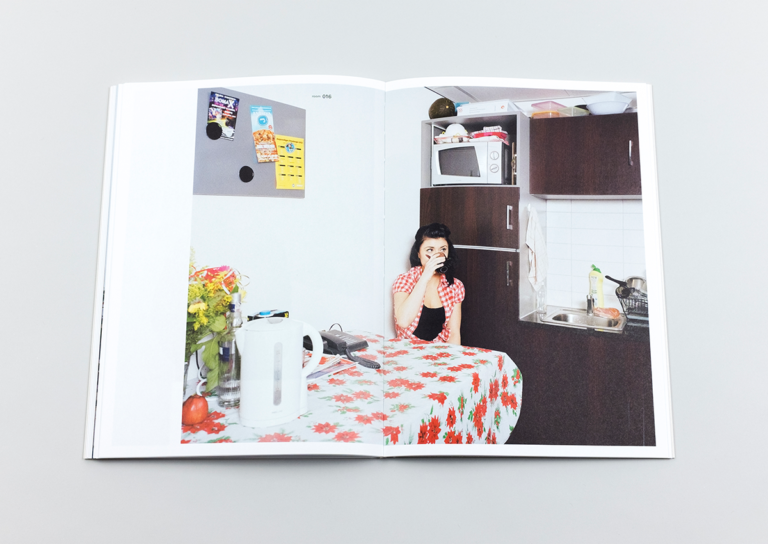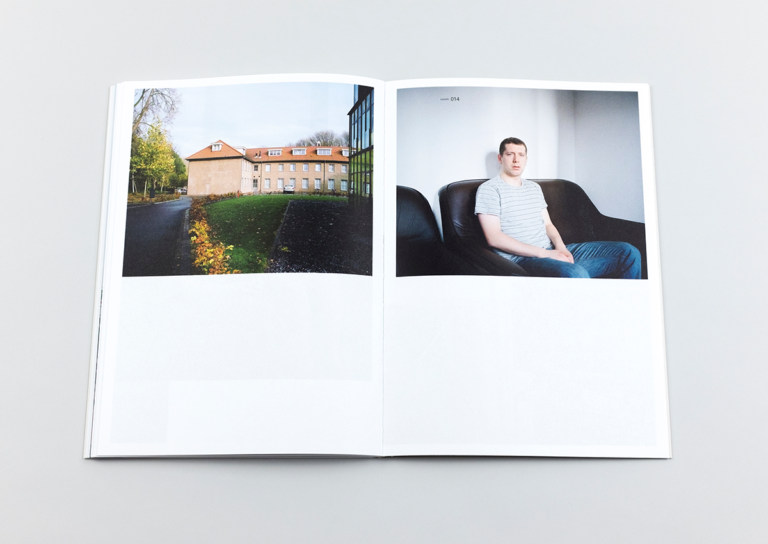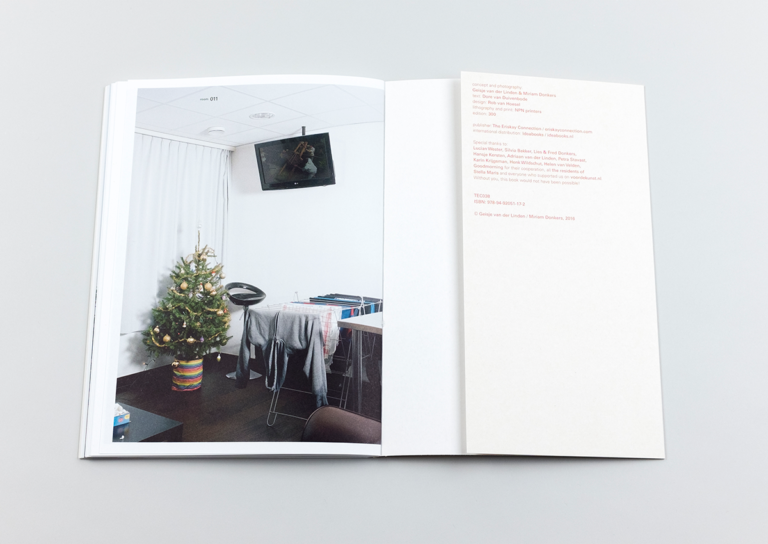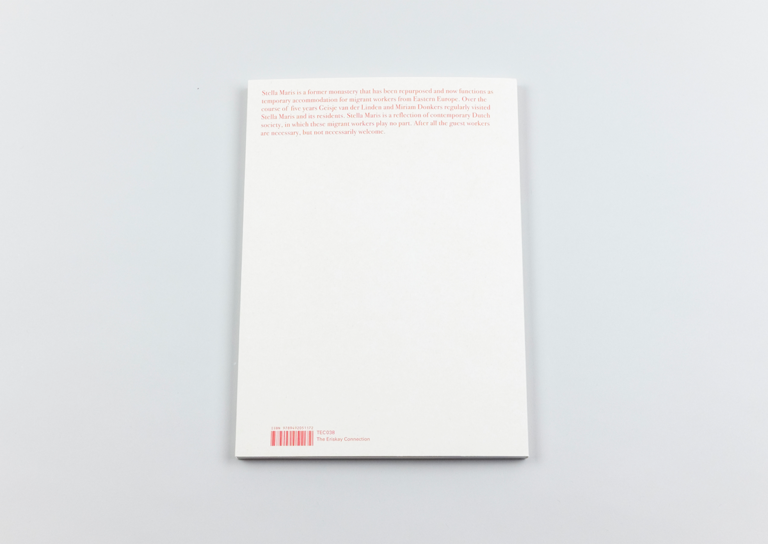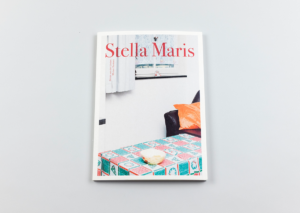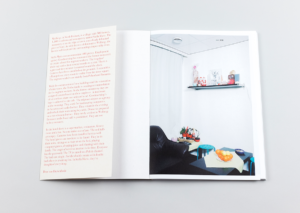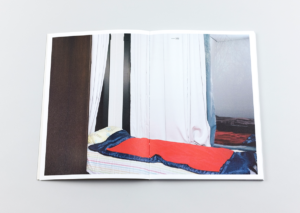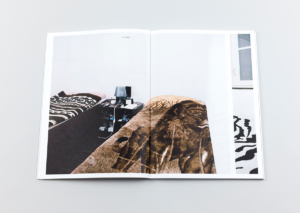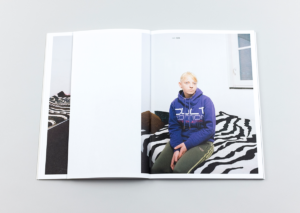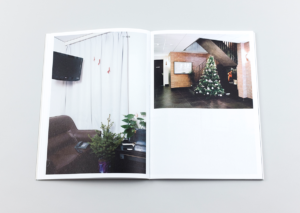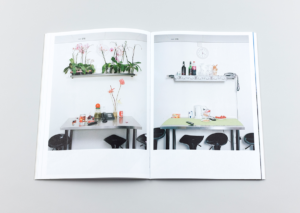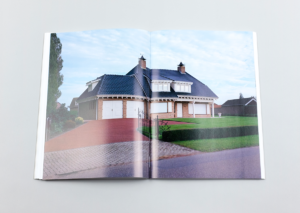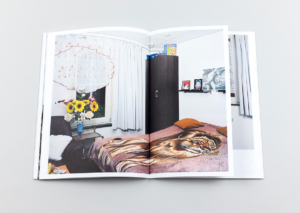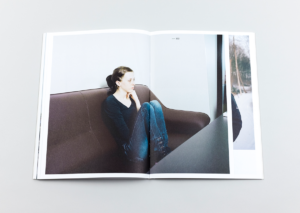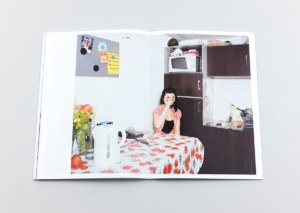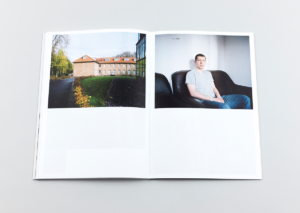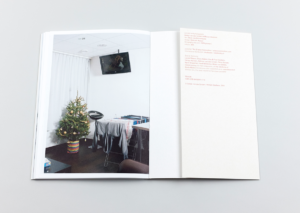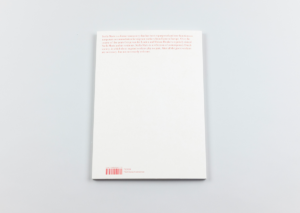Stella Maris
“With the construction of new buildings and the renovation of older ones, the Netherlands is creating accommodation for its migrant workers. In the former monastery they are assigned a room based on their employer. A maximum of six workers share one unit and a car. Goodmorning’s logo is adhered to the side. The migrants depart as a group in the morning. They work for landscaping companies, in factories and in the harbor. They return in the evening and unlock their units using keycards. Dinner is prepared on a two-element burner. They rarely set foot in Welberg. Entrance to the local cafe is prohibited. They are not to be a nuisance.”
Text from book by Dore van Duivenbode
About the Book
Stella Maris gives an impression of a renovated monastery and the daily habitat of mainly Polish, guest workers. We see a series of images of public areas, bedrooms, living rooms and portraits of young men and women. The book draws a parallel between the closeness of the monastery as a residence for the workers and the closed nature of the surrounding village. Both are strictly separated in the publication.
The book makes us aware of the distance that exists between the villagers and the migrant workers. The design deliberately anonymizes the migrant workers. No names are mentioned, only room numbers are stated. This raises a comparison with a prison. The closed atmosphere is further enhanced in the images themselves carrying feelings of loneliness, boredom or emptiness within them.
Stella Maris is published by The Eriskay Connection
The Volkskrant selected Stella Maris as one of the best photobooks of 2016! Get your own copy!
